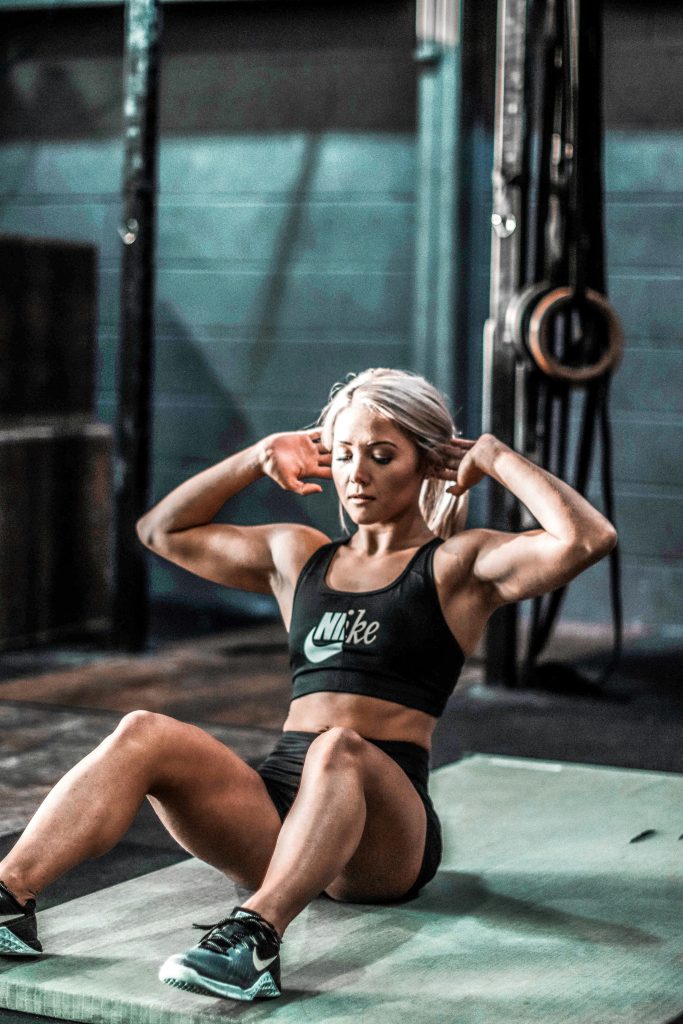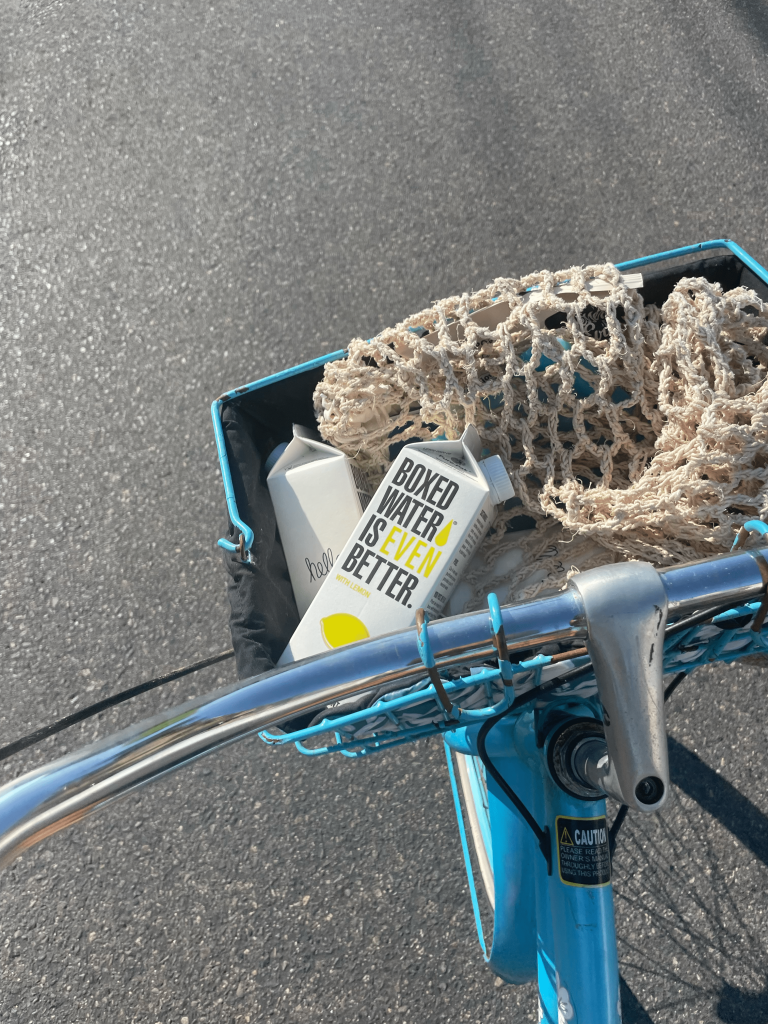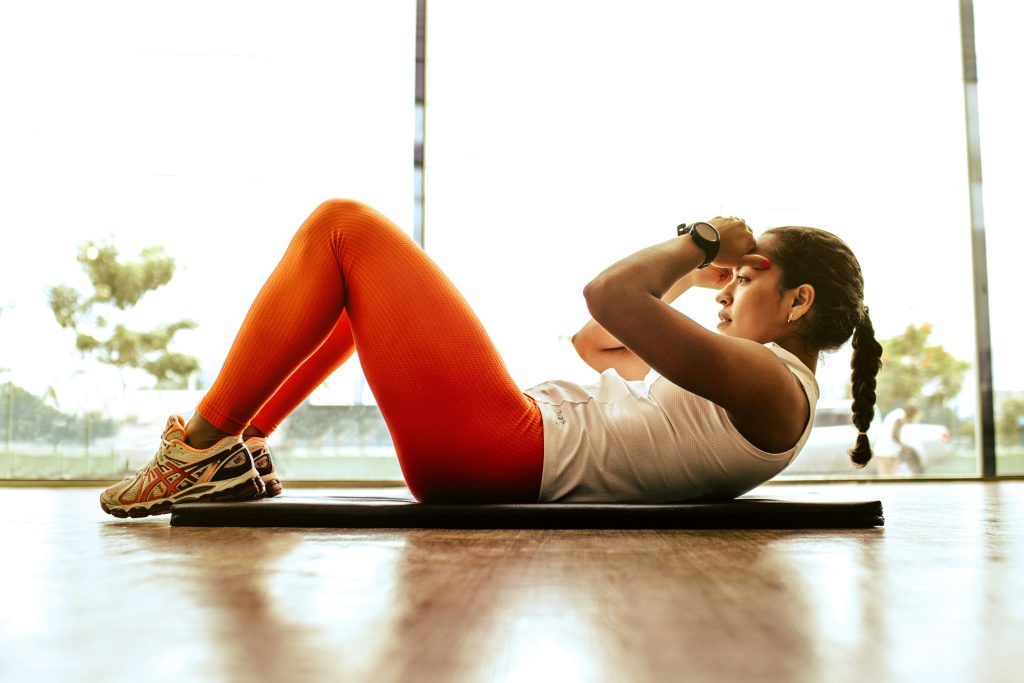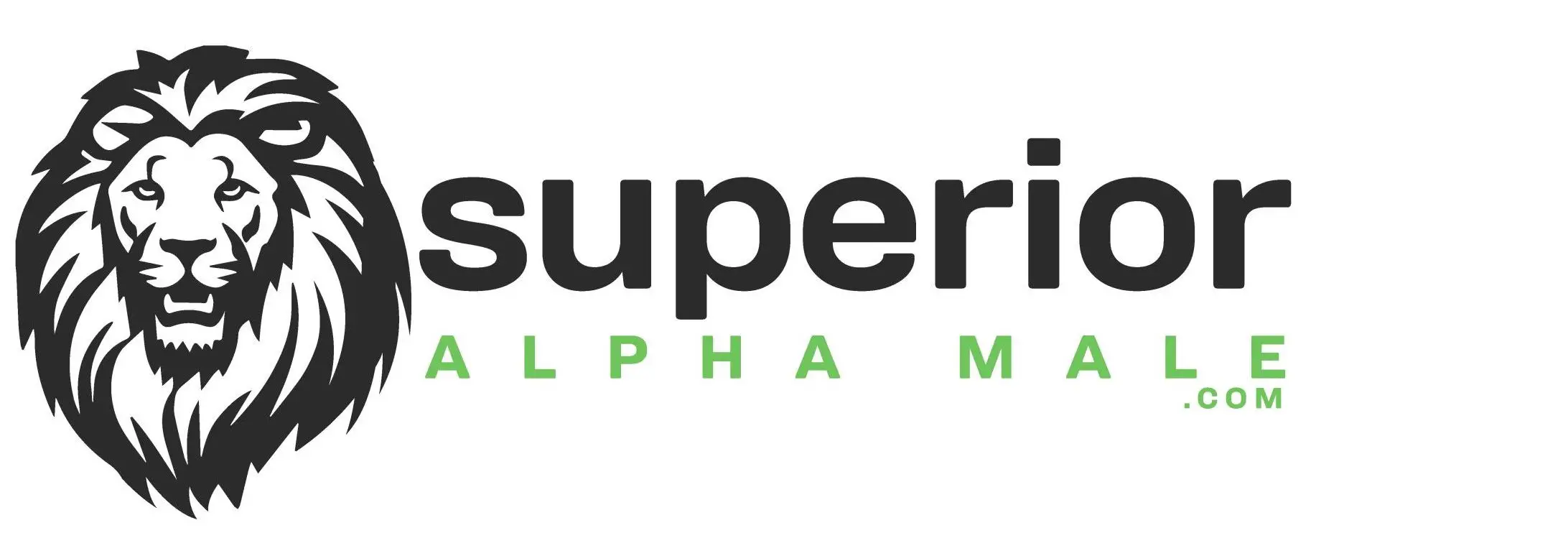Ad Blocker Detected
Our website is made possible by displaying online advertisements to our visitors. Please consider supporting us by disabling your ad blocker.
Hey there! Are you looking to level up your ab workouts? Look no further! In this article, we’ll be exploring the fantastic benefits of incorporating an exercise ball into your ab routine. Strengthening your core has never been more fun or challenging, and the exercise ball is here to take your abdominal workout to the next level. Get ready to feel the burn as we guide you through an energizing and effective ab routine that will leave you feeling stronger and more toned. Let’s get started!

This image is property of images.unsplash.com.
Benefits of Using an Exercise Ball for Ab Workouts
Improves core strength
Using an exercise ball for ab workouts can greatly improve your core strength. The unstable surface of the ball forces your core muscles to engage and work harder to stabilize your body. This helps to strengthen not only your abs but also your back, hips, and pelvis. A strong core is vital for maintaining good posture, preventing injuries, and performing everyday activities more efficiently.
Enhances balance and stability
Working out on an exercise ball requires you to constantly engage your core muscles to maintain balance. This helps to improve your overall balance and stability. By challenging your body to stay steady on the ball, you are developing better coordination and proprioception. This can be particularly beneficial for athletes or individuals involved in activities that require agility and stability.
Engages more muscle groups
When performing ab exercises on an exercise ball, you are not only targeting your abdominal muscles but also activating other muscle groups in your body. The unstable surface of the ball recruits your stabilizing muscles, such as your back, glutes, and legs, to help you maintain balance and control. This means that you are getting a more comprehensive workout that engages multiple muscle groups simultaneously.
Increases range of motion
Using an exercise ball for ab workouts allows for a greater range of motion compared to traditional ab exercises. The spherical shape of the ball enables you to extend and flex your spine more fully, targeting your abs from different angles. This increased range of motion helps to elongate and strengthen your abdominal muscles, leading to improved flexibility and better overall functional movement.
Provides a versatile and challenging workout
One of the greatest benefits of using an exercise ball for ab workouts is the versatility it offers. Whether you are a beginner or an experienced fitness enthusiast, the exercise ball can be adapted to your fitness level and goals. From simple crunches to advanced exercises, such as pikes and Russian twists, the exercise ball provides a wide range of exercises that target your abs in different ways. The adjustable level of difficulty also allows you to continuously challenge yourself and progress in your fitness journey.
Choosing the Right Exercise Ball
Consider your height
When choosing an exercise ball, it is important to consider your height. Most exercise balls are available in various sizes, typically ranging from 45 cm to 85 cm in diameter. To determine the appropriate size for your height, you can use a general guideline. If you are under 5’5″ tall, a 55 cm ball should be suitable. If you are between 5’6″ and 6’0″, a 65 cm ball would be a good fit. For individuals taller than 6’0″, a 75 cm ball or larger may be more appropriate. It is essential to choose a ball size that allows your knees and hips to be at a 90-degree angle when seated on the ball.
Select the appropriate size
In addition to considering your height, it is important to select the appropriate size of exercise ball based on your fitness goals and exercise preferences. A smaller ball may provide a more challenging workout as it requires more stability and balance. On the other hand, a larger ball may offer a more comfortable and stable base for beginners or individuals with limited mobility. It is recommended to try out different sizes to find the one that feels most comfortable and suits your workout needs.
Check the weight capacity
Exercise balls have weight capacity limits that vary depending on the brand and quality of the ball. It is crucial to check the weight capacity of the exercise ball before making a purchase. Ensure that the ball can support your body weight to prevent any accidents or injuries. It is always better to choose a ball with a higher weight capacity than your current weight to ensure its durability and longevity.
Look for anti-burst feature
When selecting an exercise ball, it is advisable to choose one with an anti-burst feature. Anti-burst exercise balls are made from durable materials that can withstand punctures or tears. In the event of a puncture, the ball will slowly deflate rather than bursting suddenly, reducing the risk of injury. Look for exercise balls that are labeled as anti-burst or made from high-quality, puncture-resistant materials.
Opt for textured or anti-slip surface
To ensure a safe and secure workout, it is recommended to choose an exercise ball with a textured or anti-slip surface. This will help to prevent any accidental slips or falls during your ab workouts. The texture or grip of the ball should provide enough traction to keep you stable and prevent unnecessary movements. Additionally, a textured or anti-slip surface can also enhance your grip and control, allowing you to perform exercises with proper form and technique.

This image is property of images.unsplash.com.
Exercises to Strengthen Upper Abs
Exercise ball crunches
To perform exercise ball crunches, start by sitting on the ball with your feet flat on the floor and your knees bent at a 90-degree angle. Walk your feet forward until your lower back is supported on the ball. Place your hands behind your head or cross them over your chest. Engage your abs and lift your upper body off the ball, curling your torso towards your thighs. Pause at the top of the movement and slowly lower back down to the starting position. Repeat for the desired number of repetitions.
Ball pikes
Ball pikes are an advanced exercise that targets your upper abs as well as your shoulders and hip flexors. Begin in a push-up position with your shins resting on the exercise ball. Engage your core and lift your hips towards the ceiling, rolling the ball towards you. Keep your legs straight and try to bring your hips directly over your shoulders. Pause at the top of the movement and slowly lower back to the starting position. Perform the exercise with control and focus on using your abs to initiate the movement.
Russian twists
Russian twists with an exercise ball provide a challenging rotational movement that works your upper abs and obliques. Sit on the exercise ball with your feet flat on the floor and your knees bent at a 90-degree angle. Lean back slightly and engage your core. Hold the exercise ball with both hands, extending your arms straight in front of you. Twist your torso to the right, bringing the ball towards your right hip. Return to the center and then twist to the left, bringing the ball towards your left hip. Continue alternating sides for the desired number of repetitions.
Plank with feet on the ball
The plank with feet on the ball is a variation of the traditional plank exercise that intensifies the challenge for your upper abs and core muscles. Start by assuming a plank position with your forearms on the ground and your toes on the exercise ball. Your body should form a straight line from your head to your heels. Engage your core and hold this position for a specific time or number of breaths. Be sure to maintain proper form and avoid any excessive sagging or arching of the back.
Reverse crunches
Reverse crunches on the exercise ball target the lower abs but also engage the upper abs as stabilizers. Lie on your back with your legs bent and your feet resting on the exercise ball. Place your arms on the floor by your sides for stability. Engage your core and lift your hips off the ground, curling the ball towards your chest. Pause at the top of the movement and slowly lower back to the starting position. Focus on using your abs to initiate the movement and avoid using momentum to swing your legs.
Exercises to Target Lower Abs
Ball leg lifts
Ball leg lifts are a challenging exercise that targets the lower abs and hip flexors. Lie on your back with your legs straight and your ankles resting on the exercise ball. Place your arms by your sides, palms facing down. Engage your abs and lift your legs towards the ceiling, keeping them straight. Slowly lower your legs back down to the starting position with control. Be mindful of any excessive swinging or momentum and focus on using your abs to lift your legs.
Bicycle crunches on the ball
Bicycle crunches on the exercise ball provide an effective way to target the lower abs and obliques. Sit on the exercise ball with your feet flat on the floor and your knees bent at a 90-degree angle. Lean back slightly and engage your core. Lift your feet off the floor and extend your left leg while bringing your right knee towards your chest. Simultaneously twist your torso to the right, bringing your left elbow towards your right knee. Return to the starting position and repeat on the opposite side. Continue alternating sides in a smooth and controlled manner.
Scissor kicks
Scissor kicks are a classic lower ab exercise that can be intensified by incorporating an exercise ball. Lie on your back with your legs straight and position the exercise ball between your ankles. Place your arms by your sides, palms facing down. Engage your core and lift your legs off the ground, keeping them straight. Open your legs in a wide V shape and then cross your right leg over your left leg, squeezing the ball between your ankles. Open your legs again and cross your left leg over your right leg. Continue alternating scissor-like movements while maintaining control and stability.
Ball knee tucks
Ball knee tucks are a challenging exercise that targets the lower abs while also engaging the hip flexors and shoulders. Start in a push-up position with your shins resting on the exercise ball. Engage your core and tuck your knees towards your chest, rolling the ball towards you. Ensure that your back stays flat and your hips remain stable throughout the movement. Pause at the top of the tuck and slowly extend your legs back to the starting position. Perform the exercise with control and aim for a smooth and steady motion.
Pilates ball roll-ups
Pilates ball roll-ups are a great exercise to strengthen the lower abs and improve core stability. Begin by sitting on the floor with your legs straight and the exercise ball in front of you. Lean back and place your hands on the ball for support. Engage your abs and lift your feet off the ground, rolling the ball towards you as you simultaneously lower your upper body towards the floor. Continue rolling the ball in until you reach a comfortable stretch or until your upper body is parallel to the floor. Extend your legs and roll the ball back out to the starting position. Focus on controlled movements and avoid using momentum to perform the exercise.

This image is property of images.unsplash.com.
Effective Oblique Exercises with Exercise Ball
Side crunches on the ball
Side crunches on the exercise ball target the oblique muscles and help to create a defined waistline. Sit on the exercise ball with your feet flat on the floor and your knees bent at a 90-degree angle. Lean back slightly and engage your core. Place your hands behind your head or cross them over your chest. Twist your torso to the right, bringing your right elbow towards your right hip. Return to the center and then twist to the left, bringing your left elbow towards your left hip. Continue alternating sides in a smooth and controlled manner.
Oblique V-ups
Oblique V-ups on the exercise ball are a dynamic exercise that engages the obliques, hip flexors, and lower abs. Lie on your left side with your legs extended and positioned on top of the exercise ball. Place your left hand on the floor for stability and support your upper body with your right hand behind your head. Engage your core and lift your legs and upper body towards the ceiling, forming a V shape with your body. Focus on using your obliques to lift your legs and torso, avoiding any excessive swinging or momentum. Lower back down to the starting position and repeat on the other side.
Squats with side twists
Squats with side twists on the exercise ball are a compound exercise that targets the obliques, glutes, quadriceps, and hamstrings. Stand upright with your feet shoulder-width apart and hold the exercise ball with both hands in front of your chest. Engage your core and perform a squat by bending your knees and lowering your hips towards the ground. As you stand back up, twist your torso to the right, bringing the ball towards your right side. Return to the center and then twist to the left, bringing the ball towards your left side. Continue alternating twists while maintaining proper squat form.
Windshield wipers
Windshield wipers with the exercise ball challenge the obliques, core muscles, and hip stability. Lie on your back with your legs extended and the exercise ball between your ankles. Place your arms out to the sides for stability, palms facing down. Engage your abs and lift your legs towards the ceiling, keeping them straight. Slowly lower your legs to the right, aiming to touch the ball to the ground without letting it rest on the floor. Use your obliques to lift your legs back up to the center and then lower them to the left. Continue alternating side-to-side movements while maintaining control and stability.
Side plank with leg lift
Side plank with leg lift on the exercise ball is an effective exercise for strengthening the obliques, core muscles, and hip abductors. Start by lying on your left side with your legs extended and your feet stacked on top of each other. Place your left forearm on the floor and position the exercise ball between your right inner thigh and the floor. Engage your core and lift your hips off the ground, coming into a side plank position. Stabilize your body and lift your right leg towards the ceiling, keeping it straight. Slowly lower your leg back down and repeat for the desired number of repetitions. Switch sides and repeat the exercise.
Challenging Full-body Ab Workout Routine
Pike to Plank
Pike to Plank is a challenging exercise that targets the upper abs, lower abs, obliques, shoulders, and triceps. Start in a high plank position with your hands on the floor and your shins resting on the exercise ball. Engage your core and lift your hips towards the ceiling, rolling the ball towards you as you come into a pike position. Your body should form an inverted V shape. Pause at the top of the pike and slowly roll the ball back out to the starting plank position. Continue alternating between pike and plank for the desired number of repetitions. Maintain control and focus on using your abs to initiate the movement.
Stability ball knee tucks
Stability ball knee tucks provide a challenging exercise that targets the entire core, including the upper abs, lower abs, and obliques. Start in a high plank position with your hands on the floor and your shins resting on the exercise ball. Engage your core and tuck your knees towards your chest, rolling the ball towards you. Keep your back flat and your hips stable throughout the movement. Pause at the top of the tuck and slowly extend your legs back to the starting plank position. Perform the exercise with control and aim for a smooth and steady motion.
Mountain climbers with hands on the ball
Mountain climbers with hands on the exercise ball are a dynamic exercise that engages the entire core, including the upper abs, lower abs, and obliques. Start in a high plank position with your hands on the exercise ball and your feet on the ground. Engage your core and bring one knee towards your chest, then quickly switch to the other knee. Continue alternating between knees in a running motion while maintaining proper plank form and control. Keep the movement smooth and controlled, ensuring that your body stays aligned throughout the exercise.
Ball pass
Ball pass is a challenging exercise that targets the upper abs, lower abs, and hip flexors. Lie on your back with your legs straight and extended towards the ceiling, holding the exercise ball between your feet. Engage your abs and lift your upper body off the ground, reaching towards the ball. Take the ball from your feet with your hands and lower your upper body and legs towards the ground. Pass the ball back to your feet and lift your upper body and legs back up towards the ball. Repeat the exercise, passing the ball back and forth between your hands and feet while maintaining control and stability.
Plank with feet on the ball and knee tucks
Plank with feet on the exercise ball and knee tucks is a challenging exercise that targets the entire core, including the upper abs, lower abs, obliques, and hip stabilizers. Start in a high plank position with your feet resting on the exercise ball. Engage your core and tuck your knees towards your chest, rolling the ball towards you. Keep your back flat and your hips stable throughout the movement. Pause at the top of the tuck and slowly extend your legs back to the starting plank position. Perform the exercise with control and aim for a smooth and steady motion.

Tips for a Safe and Effective Workout
Warm up properly
Before starting any ab workout with an exercise ball, it is important to warm up your body properly. A warm-up helps to increase blood flow to your muscles, prepare your joints, and reduce the risk of injury. Consider performing light aerobic exercises, such as jogging, jumping jacks, or skipping rope, for about 5-10 minutes. You can also incorporate dynamic stretches and mobility exercises that target the muscles involved in your ab workout.
Maintain proper form
To get the most out of your ab workouts with an exercise ball and to prevent injuries, it is crucial to maintain proper form throughout each exercise. Pay attention to your posture, alignment, and range of motion. Engage your core muscles, keep your spine neutral, and avoid any excessive arching or rounding of your back. Focus on performing each exercise with control and precision, rather than speed or quantity. If you are unsure about your form, consider working with a fitness professional for guidance and feedback.
Start with beginner-level exercises
If you are new to ab workouts with an exercise ball, it is recommended to start with beginner-level exercises. Begin with exercises that are less challenging and gradually progress to more advanced movements as your strength and stability improve. Mastering proper form and building a solid foundation of strength is essential before attempting more complex exercises. Be patient with yourself and listen to your body’s limits.
Progress gradually
As you gain strength and confidence, you can gradually increase the difficulty of your ab workouts with an exercise ball. This can be done by adding more repetitions, increasing the range of motion, or incorporating variations of the exercises. Progressing gradually allows your body to adapt and prevents overexertion or strain. However, it is important to listen to your body and not push yourself beyond your limits. If an exercise feels too challenging or causes pain, scale back or seek guidance from a fitness professional.
Breathe correctly
Proper breathing during your ab workouts with an exercise ball is important for maximizing the effectiveness of the exercises and maintaining stability. Take deep breaths in through your nose and exhale fully through your mouth. Focus on breathing deeply into your diaphragm and exhaling fully to engage your core muscles and stabilize your body. Avoid holding your breath or shallow breathing, as this can limit your performance and compromise your form.
Frequently Asked Questions
Can an exercise ball help reduce belly fat?
Using an exercise ball for ab workouts can contribute to overall fat loss and toning of your abdominal muscles. However, it is important to note that spot reduction, or reducing fat from a specific area, is not possible. To effectively lose belly fat, a combination of regular exercise, a healthy diet, and overall weight loss is necessary. The exercise ball can be a valuable tool in your fitness routine to strengthen and tone your abs, but it should be used in conjunction with a well-rounded approach to achieve desired results.
How often should I do ab workouts with an exercise ball?
The frequency of your ab workouts with an exercise ball depends on your fitness level, goals, and overall exercise routine. It is generally recommended to perform ab workouts 2-3 times a week, with at least one day of rest in between workouts. This allows your muscles to recover and adapt to the exercises. However, it is important to listen to your body and adjust your workout frequency accordingly. If you are new to ab workouts or experience muscle soreness, start with shorter sessions and gradually increase the duration and intensity over time.
Is it normal to experience muscle soreness after using an exercise ball for ab exercises?
Yes, it is normal to experience muscle soreness, especially if you are new to using an exercise ball for ab exercises or if you have increased the intensity or duration of your workouts. This soreness, known as delayed onset muscle soreness (DOMS), is caused by microscopic damage to the muscle fibers. It typically peaks within 24-48 hours after exercise and gradually resolves on its own. To alleviate muscle soreness, you can try gentle stretching, foam rolling, or applying heat or cold therapy to the affected areas. It is important to listen to your body and give yourself adequate time to recover before engaging in intense workouts again.
Can I use an exercise ball if I have lower back pain?
If you have lower back pain, it is recommended to consult with a healthcare professional or a qualified fitness professional before using an exercise ball for ab exercises. While an exercise ball can be beneficial for strengthening the core and relieving back pain in some cases, certain exercises or incorrect form can exacerbate existing back pain or lead to injury. The healthcare professional or fitness professional can provide guidance on suitable exercises and modifications to protect your lower back and prevent further discomfort.
Are there any precautions I should take while using an exercise ball for ab exercises?
When using an exercise ball for ab exercises, it is important to take certain precautions to ensure safety and effectiveness. Some general precautions include:
- Always use the exercise ball on a stable and non-slip surface.
- Avoid overinflating the ball, as this can increase the risk of bursting.
- Use appropriate footwear or exercise in barefoot to maintain stability and prevent slipping.
- Start with exercises that are suitable for your fitness level and gradually progress as your strength and stability improve.
- Avoid any jerky or excessive movements that can strain your muscles or joints.
- If you have any pre-existing conditions or injuries, consult with a healthcare professional or a qualified fitness professional before using an exercise ball for ab exercises.
Can I Use an Exercise Ball for Ab Roller Wheel Workouts?
Yes, you can absolutely use an exercise ball for ab roller workouts. Using an exercise ball instead of an ab roller wheel can provide a more challenging and dynamic workout for your core muscles. It also helps improve balance and stability while targeting the abdominal muscles.
Conclusion
Incorporating an exercise ball into your ab workouts can provide a wide range of benefits and add versatility to your routine. From improving core strength and balance to engaging more muscle groups and increasing range of motion, the exercise ball offers an effective and challenging workout for your abs. By choosing the right exercise ball that suits your needs and preferences, you can ensure safety and comfort during your workouts. By incorporating a variety of exercises that target the upper abs, lower abs, and obliques, you can strengthen and tone your abdominal muscles effectively. Remember to always warm up properly, maintain proper form, start with beginner-level exercises, progress gradually, and breathe correctly during your workouts for a safe and effective experience. If you have any concerns or questions, it is always advisable to consult a fitness professional or healthcare provider for guidance and personalized advice. Get ready to roll and enjoy the benefits of ab workouts with an exercise ball in your regular fitness routine!


